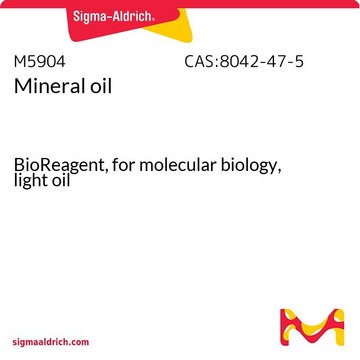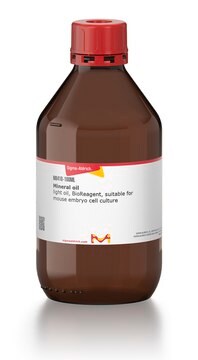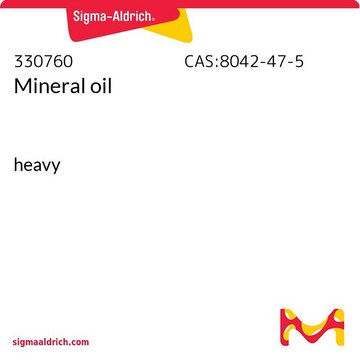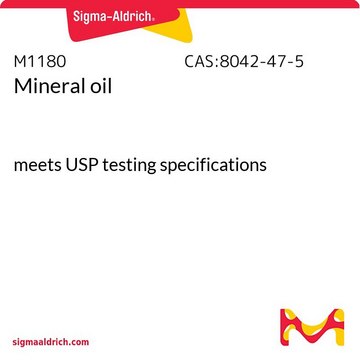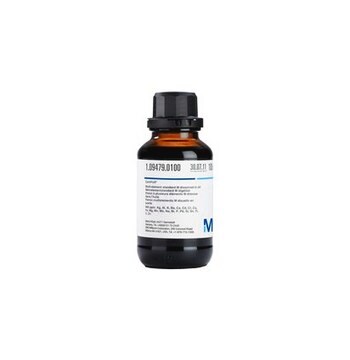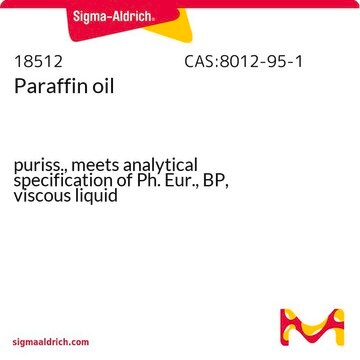M8662
Olio minerale
PCR Reagent
Sinonimo/i:
Mineral oil for PCR
About This Item
Prodotti consigliati
Grado
PCR Reagent
Forma fisica
liquid
Confezionamento
vial of 1.5 mL (Total volume 7.5 mL (5 vials))
tecniche
PCR: suitable
Colore
colorless
Indice di rifrazione
n20/D 1.467 (lit.)
Densità
0.84 g/mL at 25 °C (lit.)
Attività estranea
DNase, RNase, protease, none detected
Temperatura di conservazione
room temp
InChI
AEOVEGJBKQQFOP-DDVLFWKVSA-L
Cerchi prodotti simili? Visita Guida al confronto tra prodotti
Descrizione generale
Applicazioni
- for routine PCR amplifications
- to improve the heat conductivity between the device and the cycler during reverse transcription-polymerase chain reaction (RT–PCR) amplification
- to prevent evaporation during single-cell MATQ-sequencing performed on Bravo automated liquid handling platform
Caratteristiche e vantaggi
- Provided in a convenient 5 × 1.5 mL (1 vial) pack size
- Tested for the absence of DNase, RNase, and protease.
Codice della classe di stoccaggio
10 - Combustible liquids
Classe di pericolosità dell'acqua (WGK)
WGK 1
Punto d’infiammabilità (°F)
No data available
Punto d’infiammabilità (°C)
No data available
Dispositivi di protezione individuale
Eyeshields, Gloves
Certificati d'analisi (COA)
Cerca il Certificati d'analisi (COA) digitando il numero di lotto/batch corrispondente. I numeri di lotto o di batch sono stampati sull'etichetta dei prodotti dopo la parola ‘Lotto’ o ‘Batch’.
Possiedi già questo prodotto?
I documenti relativi ai prodotti acquistati recentemente sono disponibili nell’Archivio dei documenti.
I clienti hanno visto anche
Protocolli
Method for bacterial genome analysis and detection of pathogens. Minimize false positive PCRs through lab design and reagents tested for use in bacterial PCR applications.
Hot Start Taq Polymerase protocol to reduce non-specific amplification, with MgCl2 Optimization
Protocol using antibody mediated hot start polymerase with a red dye for easy gel loading. Method has short activation period (<1min), and results in higher yields and more specificity over standard PCR methods.
Protocol using antibody mediated hot start polymerase. Method has short activation period (<1min), and results in higher yields and more specificity over standard PCR methods.
Il team dei nostri ricercatori vanta grande esperienza in tutte le aree della ricerca quali Life Science, scienza dei materiali, sintesi chimica, cromatografia, discipline analitiche, ecc..
Contatta l'Assistenza Tecnica.